October is Eye Injury Prevention Month
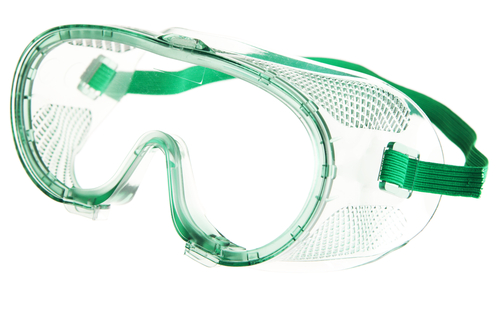 The month of October is Eye Injury Prevention Month and Vision Care Center would like to remind you that nearly half of all eye injuries occur in or around the home.
The month of October is Eye Injury Prevention Month and Vision Care Center would like to remind you that nearly half of all eye injuries occur in or around the home.
Nearly 2.5 million people in the United States experience an eye injury each year, and nearly 1 million people have lost some degree of their vision as a result. Most of these injuries could have been prevented by the use of protective eyewear.
Here are some of the most common places the eye injuries occur as well as some preventative tips to keep your eyes protected both indoors and outdoors.
Out in the garden – Be sure to use protective eyewear before you use a power trimmer, edger or lawn mower and make sure to check for any rocks or stones before you begin maintenance. Rocks and stones can become dangerous projectiles that can shoot from your gardening machines.
In the home – When using household chemicals, be sure to read the instructions and labels carefully and work in a well-ventilated area as well as making a point to spray nozzles away from you. Many chemicals are extremely hazardous and can permanently damage the surface of your eyes, which can result in blindness. It’s very important to use appropriate eye protection to prevent blinding consequences from potential chemical splashes.
In the garage – Battery acid sparks and debris from damaged or improperly jump-started automotive batteries can cause severe damage to your eyes. Learn the proper way to jump-start your car and keep protective goggles handy in the truck so you can use them in emergency situations as well as during everyday repairs.
In the workshop – Make sure to wear protective eyewear to shield your eyes from fumes, dust, flying debris, sparks and splashing chemicals. Many objects can fly into your eyes unexpectedly and result in injury.
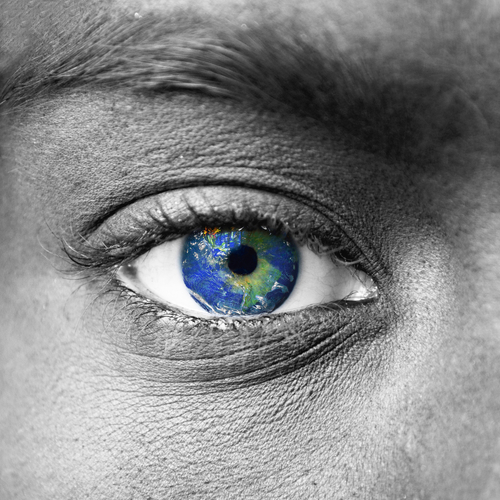
Thursday, October 9th is World Sight Day, a day of awareness created to help focus global attention on blindness, visual impairment and rehabilitation of those with visual impairments.
World Sight Day is held each year on the second Thursday in October. The day is observed globally by those involved in preventing visual impairment or restoring sight. This year’s main focus is raise awareness about avoidable blindness. Avoidable blindness is defined as blindness which can be either treated or prevented by known, cost-effective means. Although there are many other causes of vision impairment, World Sight Day seeks to address the main causes of avoidable blindness in order to have the great possible impact on vision loss worldwide.
Here are some statistics to consider on World Sight Day:
- Approximately 285 million people worldwide live with low vision.
- Of these, 39 million people are blind and 246 million have moderate or severe visual impairment.
- 90% of blind individuals live in low-income countries, yet 80% of visual impairments are avoidable with treatment and prevention.
- 80% of blind individuals are over the age of 50.
- Women and girls make up over two thirds of the blind population worldwide.

September is Sports Eye Safety awareness month and we encourage anyone who participates in sports – children and adults alike – to remember to protect their eyes. Sports are the leading cause of eye injuries in children under the age of 16. Many people are unaware of how serious sports injuries are, and that these kind of injuries could lead to irreversible eye damage. Most sports-related eye injuries can be easily avoided by simply wearing proper eye protection.
For all age groups, eye injuries occur most frequently during such sports as basketball, baseball, racquet sports, soccer and field hockey. Protective eyewear with polycarbonate lenses that have been tested to meet safety standards should be worn during such athletic activities. Protective eyewear can help prevent injuries such as fracture of the eye socket, scratched corneas, swollen retinas, and even cataracts caused by trauma to the eye.
Keep your eyes protected while playing your favorite sports by following these simple rules.
1. Choose sports eyewear that has padding around the eyes, brow and bridge of the nose to help prevent any skin cuts.
2. Never play sports with your regular prescription glasses. Eyeglasses tend to be very fragile and can shatter on impact, which could send shards of glass into your eyes.
3. Make sure you see your eye doctor to consider the different types and options of sports eyewear that can work best for you.
4. If you have reduced vision in one eye, consider the risks associated with injuring your stronger eye before participating in any high risk sports.
Sports-related eye injuries can lead to long-term problems with your vision. That’s why it is always a good idea to take the proper safety precautions when playing your favorite sports. Your eyes are one of the most important organs and by taking care of them on the playing field you can protect your eyesight for many years to come.
Light is something that is constantly all around us, in our homes and offices, shining from our televisions, smartphones and computer screens. For the most part, nobody really stops to think about light and the effect of different colors of light has on our bodies, moods and overall health. Were you aware that blue light can actually make you feel better? However, it can also cause insomnia as well as affect the health of your eyes and vision.
Without even thinking about it, our body processes blue light to regulate our biological clock. It also plays a role in basic functions of our brain such as alertness, memory, cognitive performance, and emotion. Light therapy using wavelengths of blue light has been proven as an effective treatment that helps people of all ages with many different conditions. In fact, phototherapy in the form of blue light waves is a standard procedure used to reduce high levels of bilirubin in the blood of newborn babies. Some dermatologists also use blue light therapy to treat skin conditions such as rosacea, psoriasis and acne. Blue light therapy is also used to help those that suffer from Seasonal Affective Disorder (SAD), which is a type of depression that results from lack of daylight during the winter season. Although it is common for many of us to experience minor changes in mood without adequate amounts of sunlight, severe forms of Seasonal Affective Disorder can cause debilitating fatigue, changes in appetite, and mood disorders. Many studies have shown that blue light therapy can be as effective as antidepressant medications in some people.
But there is also an alarming concern about the potential hazard caused by the blue light emitted from digital devices that most of us use on a daily basis. Blue light has been attributed to headaches, dry eyes, and difficulty sleeping. In its natural form, blue light from the sun helps our bodies determine night from day and therefore when it is time for us to sleep. At night, light can cause our body’s circadian rhythm, or biological clock, to become disrupted. With the widespread increase of digital devices and LEDs being used constantly in our everyday lives, blue light is having more and more impact on our bodies’ inability to sleep. This is concerning as getting enough sleep each night is very important to our overall health. While we are asleep, our bodies restore mental and physical energy as well as rebuild muscle tissue. Light can suppress the secretion of melatonin, which is the hormone that tells your brain when it’s time for bed. This is why staring at your television, computer, tablet or phone right before you got to bed has a negative impact on your body’s ability to get a good night’s sleep.
Research has also shown that high-energy blue-violet light at the end of the visible spectrum, near UV light, has been found to cause significant damage to retinal cells in the eye and is a risk factor for the onset of age-related macular degeneration.
One very simple way to protect your body and your eyes from the dangers associated with blue light is to limit your exposure. Rather than checking email, texting on your phone or watching television in bed at night, try reading a book or taking a bath before you go to sleep. For those times that you must be in front of a computer or other digital device, aim to keep blue light at a distance – blue light should not be near eye level for extended amounts of time, so be sure to move your screen as necessary.
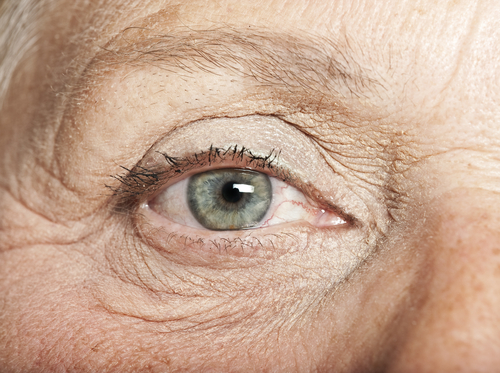 A simple eye test could soon reveal whether patients have Alzheimer’s disease, or if they are likely to develop the disease in the future. Researchers recently announced promising results associated with a study focused on a new test that can pick up on the disease years – if not decades – before the appearance of clinical signals.
A simple eye test could soon reveal whether patients have Alzheimer’s disease, or if they are likely to develop the disease in the future. Researchers recently announced promising results associated with a study focused on a new test that can pick up on the disease years – if not decades – before the appearance of clinical signals.
This is big news considering that more than 5 million Americans currently have Alzheimer’s disease with that number expected to increase dramatically in the decades ahead.
The technology of this new eye test is based on the simple idea of identifying beta amyloids visible in the retina. Beta amyloids have been known to be linked to the disease. The brain-clogging amyloid plaques are considered an indicator of the disease and can be seen in the back of the eye, which is considered a mirror for brain health. If the test is successful, then screening for Alzheimer’s may become as simple as having your eyes examined.
“What makes it so unique is that the retina is actually an extension of the brain and so we think that a lot of the pathology that is occurring in the brain may also be occurring in the retina,” said New York University Langone Medical Center neurologist Dr. James Galvin.
Australian researcher Shaun Frost tested 40 people using a liquid form of curcumin, which is the natural substance that makes curry appear yellow. Curcumin sticks to beta amyloids allowing doctors to spot the proteins via a simple eye test. Frost found that the test positively identified 100% of participants who had Alzheimer’s.
Although Alzheimer’s disease has no known cure, early detection is the key goal in administering treatments to slow its progression. Medicines to help treat symptoms of Alzheimer’s have been shown to be more effective when prescribed during the early stages of the disease. More importantly, to develop new therapies, doctors need to be able to identify people at the earliest stages of the disease.
Currently Alzheimer’s is detected through spinal taps or PET scans, which are invasive, expensive, and not always readily available. The developers of this revolutionary eye test say it can predict the onset of the disease 15 to 20 years before clinical diagnosis.
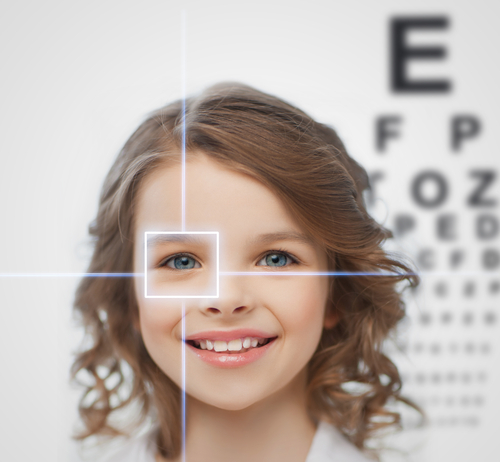
August has arrived and that means that many parents are preparing their children for another school year. August is also Children’s Eye Health and Safety Month. When 80% of learning occurs through the eyes, healthy vision is essential to a child’s success in the classroom. In addition to buying school supplies and new clothes, don’t forget to add scheduling a comprehensive eye exam as part of your back to school to-do list.
While most children’s eyes are healthy, it is estimated that one in ten children is at risk for developing an undiagnosed vision problem that could easily be treated if diagnosed through an eye exam. If these issues aren’t addressed, poor vision can lead to lower grades, diminished self-confidence and decreased self esteem. It is recommended that kids receive full, dilated eye exams at the ages of 6 months, 3 years, 5 years (or just before entering kindergarten), and every two years thereafter.
Keep a watchful eye out for some of these common indicators that might signal a potential vision problem in your child.
- Frequently rubbing eyes
- Titling or turning their head to look at objects
- Wandering eyes
- Squeezing or squinting their eyes
If you notice these symptoms, make sure you schedule an appointment with an eye care professional. Amblyopia, strabismus, color blindness and refractive errors are the most common conditions that affect children’s vision.
Eye safety is also another important part of your child’s eye health. Each year thousands of kids sustain some form of eye injury. 90% of those injuries can be prevented by taking proper precautions such as wearing protective eyewear. From sports to toys and fireworks, eye injuries can happen any time anywhere. You can help to safe-guard your child’s vision by purchasing age-appropriate toys and encouraging them to wear protective eyewear during sports and other recreational activities.
Of course accidents do happen, so if your child does experience an eye injury, make sure they do not rub or touch their eye and seek medical attention from a trusted eye care professional as soon as possible.
Whether you’re playing an action-packed sport or just cleaning around the house, eye injuries can happen anytime, anywhere to anyone. The American Academy of Ophthalmology reported that more than 2.5 million eye injuries happen every year across the world with 100,000 of those injuries taking place in the U.S. Of those eye injuries 90% could have been prevented with protective eyewear. Ask your eye doctor about protective eyewear and take proper measures to better protect you and your family from eye injuries.
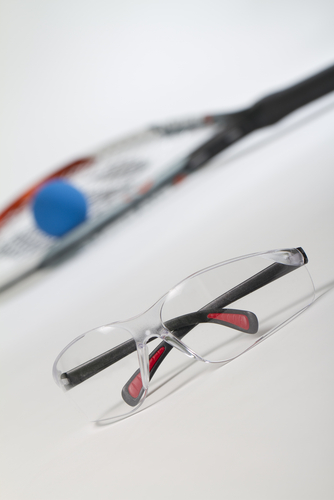
Always wear protective eyewear and use this list to help keep you aware of some of the most common eye injuries that can occur.
Eye Swelling
Eye swelling is usually a result of something hitting the area around the eye with extreme force, which results in a black eye. The eyelids and area around the eye itself will swell and often change color due to bruising. The best immediate treatment for this type of eye injury is the application on an ice pack.
Blunt Trauma
Blunt trauma occurs when something hits the eye. It is the most common cause of sports-related eye injuries. Activities that can result in blunt trauma include basketball, water sports, baseball, and racquet sports.
Chemical Burns
Getting unexpectedly splashed or sprayed in the eye by substances other than clean water can be very scary. Some substances sting or burn but are fairly harmless in the long run, while others can result in serious injury. The chemicals involved can make a lot of difference.
Acid – Acids can cause considerable amounts of redness and burning, but can be washed out of the eye fairly easily.
Alkali – Chemicals or substances that are basic (alkali) are much more serious but may not immediately seem so as they don’t cause an instantaneous reaction like eye pain or redness like acids do. Some examples of alkali substances are oven cleaners, toilet bowl cleaners and even chalk dust.
Most chemical exposures and burns are caused by a splash of the liquid getting into the eye, but they can also occur in other ways, such as rubbing your eyes and transferring the chemical from your hands to your eyes.
If your eye becomes extraordinarily red or blurry from a chemical splash, seek medical attention as soon as possible. Depending on the substance, the effect of chemical exposure to the eye can lead to injuries that range from minor irritation and redness to serious damages and even blindness.
Penetrating or Foreign Objects in the Eye
These types of injuries occur when a foreign object penetrates the surface of the eye. If your glasses break while you’re wearing them, a piece of the lens or even the frame can cut into your eye resulting in a penetrating eye injury. If a foreign body enters your eye, be sure to see your eye doctor as soon as possible to have the foreign bodies removed to prevent further damage to your
eye.
Eye Scratches (Corneal Abrasions)
If you know that something has scratched your eye and left an abrasion, it’s important to seek medical help as scratches can make your eye susceptible to infection from bacteria or a fungus. Certain types of bacteria and fungi can enter the eye through a scratch and cause serious harm.
If your eye has been scratched, do your best to not rub it. Don’t patch your eye either as bacteria likes dark, warm places to grow and a patch might provide an ideal environment. Instead keep the eye closed and see your eye doctor as soon as possible to check out the injury.
Bleeding
There is a blood vessel that runs between the white part of the eye (known as the sclera) and the eye’s clear covering and when one or more breaks occur in this blood vessel, it can result in blood leakage. This eye injury is actually painless and the blood vessel will repair itself over the course of several weeks. Sometimes small blood vessels in the sclera break and can cause red spots or specks. These are called subconjuctival hemorrhages. The blood vessels can break due to many different things such as sneezing, coughing, vomiting, or bending over, but sometime there is no clear cause.
Treat all eye injuries as potential emergencies and never hesitate to seek out the help of a trusted eye care professional.
Exercise can seem like a daily chore to some, but it actually may help our body in more ways than we think. A recent study suggests that exercise could protect our eyes as we age.

It has been proposed the exercise may reduce the risk of such eye diseases as macular degeneration, which is the leading cause of severe vision loss in people over the age of 60 and occurs when neurons in the central part of the retina deteriorate. A 2009 study of more than 40,000 middle-aged distance runners found that those covering the most miles had the least likelihood of developing age-related macular degeneration. Unfortunately this study didn’t compare runners to non-runners and also didn’t try to explain how exercise might have an effect on the incidence of eye diseases, which limited the usefulness of its findings.
Recently researchers at Emory University in Atlanta and the Atlanta Veterans Administration Medical Center in Decatur, Georgia decided to look into those very questions posed by the 2009 study on how exercise might affect eye health. Their interest had been piqued by animal research at the V.A. Medical Center that had determined that exercise increases the levels of substances known as growth factors in animals’ bloodstreams and brains. These growth factors, especially one called brain-derived neurotrophic factor (B.D.N.F.), are known to contribute to the health and well-being of neurons and are thought to contribute to improvements in brain health and cognition after regular exercise.
But the brain isn’t the only part of the body that contains neurons. The retina also holds neurons and therefore researchers were curious to see if exercise might raise the levels of B.D.N.F. and potentially affect retinal health and vision.
To test the possibility that exercise may benefit retinal health and vision, the researchers gathered healthy adult mice, half of them were allowed to remain sedentary all way, while the other half began running on mouse-sized treadmills at a gentle pace for about an hour a day. After two weeks, half of the mice in each the two groups were exposed to bright light for four hours. The other mice stayed in dimly lit cages. This kind of light exposure is widely used as an accepted means of inducing retinal degeneration in animals. It doesn’t precisely mimic the slowly progressing disease of macular degeneration the way it happens in humans, but it causes a comparable loss of retinal neurons that help scientists easily study.
The mice then returned to their former routines of either running or not exercising for another two weeks. After that period of time the scientists measured the number of neurons in each of the animal’s eyes. The unexercised mice that were exposed to the bright light were found to be experiencing severe retinal degeneration. Almost 75% of the neurons in their retinas that detect light had died and the animals’ vision was failing.
However, the mice the exercised before being exposed to the light retained about twice as many functioning neurons as the animals who did not exercise. In addition, those cells were more responsive to normal light than the surviving retinal neurons found in the unexercised mice. The study seems to prove that exercise can armor retinas against age-related vision loss and therefore help to maintain healthy vision.
Low vision refers to a visual impairment that is not correctable through surgery, prescription drugs, glasses or contacts. It’s often characterized by partial sight, such as blurred vision, blind spots or tunnel vision. Low vision can impact people of any age, but it is primarily associated with adults over the age of 60.
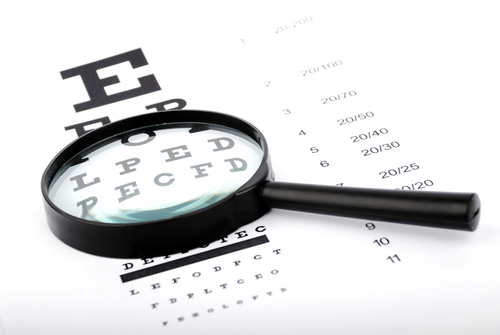
Causes of Low Vision
Some of the most common visual impairments that cause low vision include:
Glaucoma
Glaucoma is the second leading cause of blindness. Glaucoma causes portions of vision to become lost over time, usually without any warning. For many, a decrease in peripheral vision is one of the first symptoms of glaucoma.
Cataracts
Over 20 million people in the United States have cataracts according to Prevent Blindness America. Cataracts appear as the clouding of the lens of the eye.
Age-related Macular Degeneration
Age-related Macular Degeneration (AMD) is a leading cause of vision loss among Americans aged 60 and older. It accounts for nearly half of all low vision cases. It occurs when the part of the eye that is responsible for straight-on vision – the macula – breaks down and causes loss of central vision. There are two types of AMD, dry and wet. Wet AMD is caused by the growth of abnormal blood vessels under the macula. Central vision loss occurs rapidly with this form of AMD. In dry AMD, light-sensitive cells in the macula slowly break down leading to gradual loss of central vision.
Retinitis Pigmentosa
Retinitis pigmentosa is a group of inherited diseases that affect the retina resulting in the progressive loss of vision. This type of visual impairment often starts in childhood with poor night vision and progresses over time.
Diabetic Retinopathy
According to the National Eye Institute more than 30% of Americans who are diagnosed with diabetes has some form of diabetic retinopathy. Diabetic retinopathy is a major cause of blindness and is directly related to high blood sugar, which damages blood vessels in the eye. This damage affects the retina and can even lead to retinal detachment.
There are many other causes of low vision including strokes, traumatic brain injury and other diseases such as Stargardts, albinism and more.
Signs of low vision include:
- Blind spots in your field of vision
- Gradual loss of central vision
- Areas of distorted or blurred vision spots and blotches in your vision
- Shadowed or darkened field of view or noticeable loss of peripheral vision
- Cloudy and blurred vision or halos around bright lights
How can low vision be treated?
Different cases of low vision require different treatment approaches. Some people develop low vision over time due to aging or a genetic propensity for a certain condition while other people suffer sudden trauma to the eye, which can result in loss of vision or visual impairments. A thorough examination by an eye care professional can help determine the appropriate treatment plan.
Catching symptoms of low vision early may help sight to be preserved and in some cases lessen the advancement of vision loss. Though lost vision cannot be restored, a combination of vision rehabilitation and the use of low vision devices can return something that is almost as important — independence and an increased quality of life. The key is working in tandem with your eye doctor. Some low vision devices that can help individuals see more easily include magnifiers, specialty eyewear, mini-telescopes mounted on eyewear, and closed-circuit TV.
Treatment plans may also include prescription glasses, specialized optical systems, non-optical options, video magnification, and/or medical rehabilitative therapy to maximize the ability to perform daily activities.
June is Cataract Awareness Month. Cataracts are the leading cause of blindness in the world and affect more than 22 million Americans aged 40 and older. Vision Care Center wants you to be informed about the ways you can help protect yourself.
Risk factors for developing cataracts include diabetes, direct and prolonged exposure to UV radiation from sunlight, tobacco use and alcohol consumption. While half of all individuals 80 and older have cataracts, studies have shown that the risk for cataract development can be reduced by taking preventative measures in your younger years.
One easy step to prevent cataract development is to wear sunglasses, especially in the summer months when ultraviolet radiation from the sun is at its strongest. Studies have shown that UV radiation may cause the protein in your eye’s lens to breakdown, resulting in the formation of cataracts. Wearing sunglasses with UV protection will protect your eyes from excessive amounts of UV rays. When choosing a new pair of sunglasses be certain that they are 100 percent UV-absorbent.
Other preventable measures to take against cataracts include quitting smoking and consuming alcohol in moderations as both activities increase your chances of cataract formation. People who smoke at least 20 cigarettes per day have two times the risk of developing cataracts as compared to people who do not smoke. A 2010 Boston University study found that alcohol consumption of over 2 alcoholic drinks per day was linked to a significant increase in the likelihood of cataract development when compared to a total daily alcohol consumption of 1 to 2 drinks.
What are Cataracts?
A cataract is a clouding of the lens of the eye that affects a person’s vision. While cataracts are generally age-related, they can occur at birth due to a condition known as congenital cataracts.
Cataracts in adults develop slowly and painlessly. That’s why it is important to have your eyes examined on a regular basis as early diagnosis of cataracts is extremely helpful in maintaining good eye health.

Visual problems that may be associated with cataracts include:
- Being sensitive to glare
- Double vision
- Cloudy, fuzzy, foggy, or filmy vision
- Loss of color intensity
- Difficulty seeing at night or in dim light
- Seeing halo around lights
- Problems seeing shapes against a background of the difference between shades of colors
- Frequent changing of glasses prescriptions, or seeing better without glasses
While it is possible to reduce your risk of developing cataracts, they are not 100% preventable. There are many different factors that can contribute to the development of cataracts including family history, medications, and age. A comprehensive eye exam can diagnose cataracts and help you and your doctor determine an effective plan for treatment.
